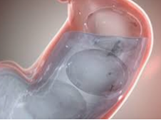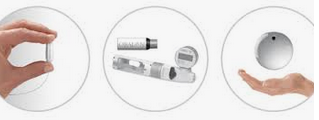Obalon Balloon System for Nonsurgical Weight Loss: What You Should Know
The Obalon Balloon System is a non-surgical weight loss option. The treatment itself takes six months, but the entire program should take 12 months. You must follow a dietary and exercise program during the entire period of 12 months.
What is the OBALON BALLOON SYSTEM?
The FIRST and ONLY swallowable, FDA-approved 3-balloon system for weight loss.
The Obalon Balloon System is a swallowable intragastric balloon system indicated for temporary use to facilitate weight loss in adults with obesity who have failed to lose weight through dieting and exercise alone. The System is intended to be used as an adjunct to a moderate-intensity diet and behavior modification program. All balloons must be removed 6 months after the first balloon is placed.

Who’s a good candidate?
The best candidate is an adult 22 years or older, with a body mass index (BMI) between 30 and 40. You should not use this treatment if you have had prior stomach surgeries, such as gastric bypass, and if you are extremely obese with a BMI much higher than 40. There are other limitations, so if you are considering Obalon, it’s best to talk to an Obalon-trained physician.
How does Obalon work?
The Obalon Balloon System uses three intragastric balloons that taking up space in your stomach to make you feel full faster. This should help you consume smaller portions of food and make weight loss easier. Your doctor places the first Obalon Balloon at the beginning of the treatment. They will place the second balloon approximately one month later. The last balloon is placed approximately 2-3 months into your treatment. All three balloons then stay in the stomach for another three months, for a total treatment time of six months.
During treatment, you should receive professional nutrition and exercise support to help you make the lifestyle changes that promote weight loss. The Obalon Balloon System helps you change your eating habits and keep the weight off for the long term.
Preparing for Obalon
The Obalon Balloon treatment has a relatively long treatment time, so it will require adjustments on your part, including lifestyle modifications. Before you start the treatment, make sure you are ready to make the long-term commitment.
You will need to find an Obalon provider in your area and schedule an appointment. Only Obalon-trained physicians perform the treatment. Discuss your medical history, as well as your expectations, with your physician. They should check your overall health condition and run initial blood tests. If you’re the right candidate for Obalon and you decide to go ahead with the treatment, your physician should design an individual treatment plan for you. You should also meet with your dietitian or nutritionist to discuss your diet and exercise plan.
Obalon procedure
Each Obalon Balloon is folded in a capsule with a thin catheter attached to it. The procedure is the same for each balloon:
• You’ll swallow the capsule with a glass of water, while your physician holds onto the catheter so that the end of it remains outside your mouth.
• After swallowing the capsule, your physician will use an ultrasound system to make sure the capsule is safely in your stomach.
• The balloon is then inflated with gas through the catheter.
• The catheter is smoothly removed through your mouth, and you should be able to go back to your daily activities immediately.
The placement procedure usually takes about 10 minutes and no sedation is necessary.
Your physician will schedule placement appointments for the other two balloons, typically a month apart. You should follow your diet and exercise program during the entire Obalon six-month treatment.
At the end of the six-month period, your doctor will remove all three balloons during a short endoscopy procedure:
• Your physician will give you a light sedation, but you stay conscious.
• Using a special endoscopic tube with a camera, the physician deflates the balloons in the stomach and then takes the balloons out one by one with a special tool.
The removal procedure usually takes about 15 minutes and is associated with minimum downtime.
How long will it take to recover after the placement and removal of the balloons?
Both the placement and removal of the Obalon Balloons are nonsurgical procedures, so there is usually little to no downtime.

Are there any risks or side effects?
The Obalon Balloon System was approved by the FDA in September 2016. In the clinical trials prior to the approval, typical side effects included nausea and abdominal pain. Serious side effects were reported in less than 0.3 percent of cases.
A fully inflated single balloon has a volume of 250cc, weighing approximately 3 grams (less than a penny) and about the size of a small orange. Therefore, all three balloons have a combined volume of 750cc and have been associated with high stomach tolerability and only mild adverse events.
What to expect after Obalon
After the Obalon Balloons are removed from your stomach, you should follow the customized diet and exercise program and consult with your dietitian or nutritionist for the next six months. To keep the weight off long term, you’ll need to maintain healthy eating habits and continue to exercise regularly.
The results of the Obalon Balloon treatment are very individual and largely dependent on how rigorously you follow the diet and exercise program. In the Obalon clinical trial, participants lost twice as much weight with the Obalon Balloon System as with diet and exercise alone. Approximately 89 percent of the total weight lost at six months was still kept off at one year.
Outlook
The Obalon Balloon System may be a good weight loss option if you:
• have had trouble losing weight with exercise and diet alone
• have a BMI between 30 and 40
• haven’t had stomach surgery in the past
• are 22 or older
• are able to commit to the 12-month treatment plan, which includes diet and lifestyle changes
This treatment is non-invasive and should only be performed by an Obalon-trained physician. For best results, follow the diet and exercise plan recommended by your doctor. Continue to eat healthy foods and exercise after the treatment is complete.
Feb 23,2021
HUNG M. DO, MD, PhD
